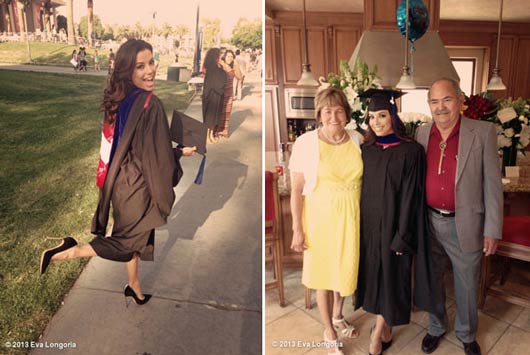
Migrant Mother, Nipomo, CA by Dorothea Lange
Here are some facts that will make your eyes pop: In the U.S. today, 47% of the workforce is comprised of women, yet 42 million women live at or near the brink of poverty. Women are the breadwinners or co-breadwinners of nearly two thirds of American families; they control $20 trillion in global spending and outnumber men at every level of the higher education ladder.
Like for most of you, women are at the center of my life. They are the pillars that sustain my family and my community. They are role models, supporters, providers and caregivers. And they are the ones driving the civic participation of their families.
Read Related: Education is Paramount Issue to Latina Moms
Many of the women I know have gone on to college and are now in solid middle class careers. But I also know many who, for a myriad of reasons, did not. Yet, regardless of whether they are college educated or working in low-skill jobs, they are all struggling to leave their kids on better economic footing. And many of them find it difficult to balance work and family responsibilities in light of our outdated policies—such as unpaid sick days—which sometimes put their, or even their partners’, jobs at risk.
That is why “The Shriver Report: A Woman’s Nation Pushes Back from the Brink”, is such an important addition to the public conversation, not just about how to help women but about how to help our familias and our nation push back from the brink. Because in spite of the many advances women have made in the last 40 years, one in three still lives in poverty. And while 47% of the labor force is female, 62% of minimum wage jobs are held by women.
The economic situation for Latinas is even direr. As Eva Longoria describes in her essay in the Shriver report, one in three Latinas drops out of high school, only 15% go to college, and 25% live in poverty. Latinas also happen to earn less than any other group, making only 60 cents for every dollar a white male earns for the same job.
This economic reality exists in spite of Latinas’ high aspirations. The report points to the fact that 80% of Latina high school students aspire to go to college. Moreover, a recent Girls Scout report shows that 50% of Hispanic/Latina girls want to be leaders, compared to 39% of all girls.
The economic challenges Latinas face illustrate why it is important to turn those aspirations into action and mobilize women and men to dismantle the profound inequities that exist. How do we do that? By using our collective economic power and supporting companies that offer fair workplace policies and companies that invest in women. By not just giving away our vote away and instead supporting those who want to modernize our nation’s laws. By asking our elected officials about their stance on preschool and child care access, on paid sick days, on increasing the minimum wage and the Paycheck Fairness Act, which are a few of the policy proposals that should be enacted to level the playing field for all women.
And finally, we all can make a difference by making a New Year’s resolution to mentor and motivate our young Latinas. Hispanic/Latina girls currently make up more than one in five girls ages 5 to 17, and by 2020, they are projected to make up 27% of girls in that age group. And they need us.
Share with them the importance of making smart financial, personal and educational decisions so that when they became the pillars of their families and communities, they will be on better economic footing than we are in today. Most importantly, teach them that they have the power to change their lives and in the process transform our community and nation.
Vanessa Cárdenas is the Vice President of Progress 2050, a project of the Center for American Progress which seeks to build a progressive agenda that is more inclusive of the rich racial and ethnic makeup of our nation.












